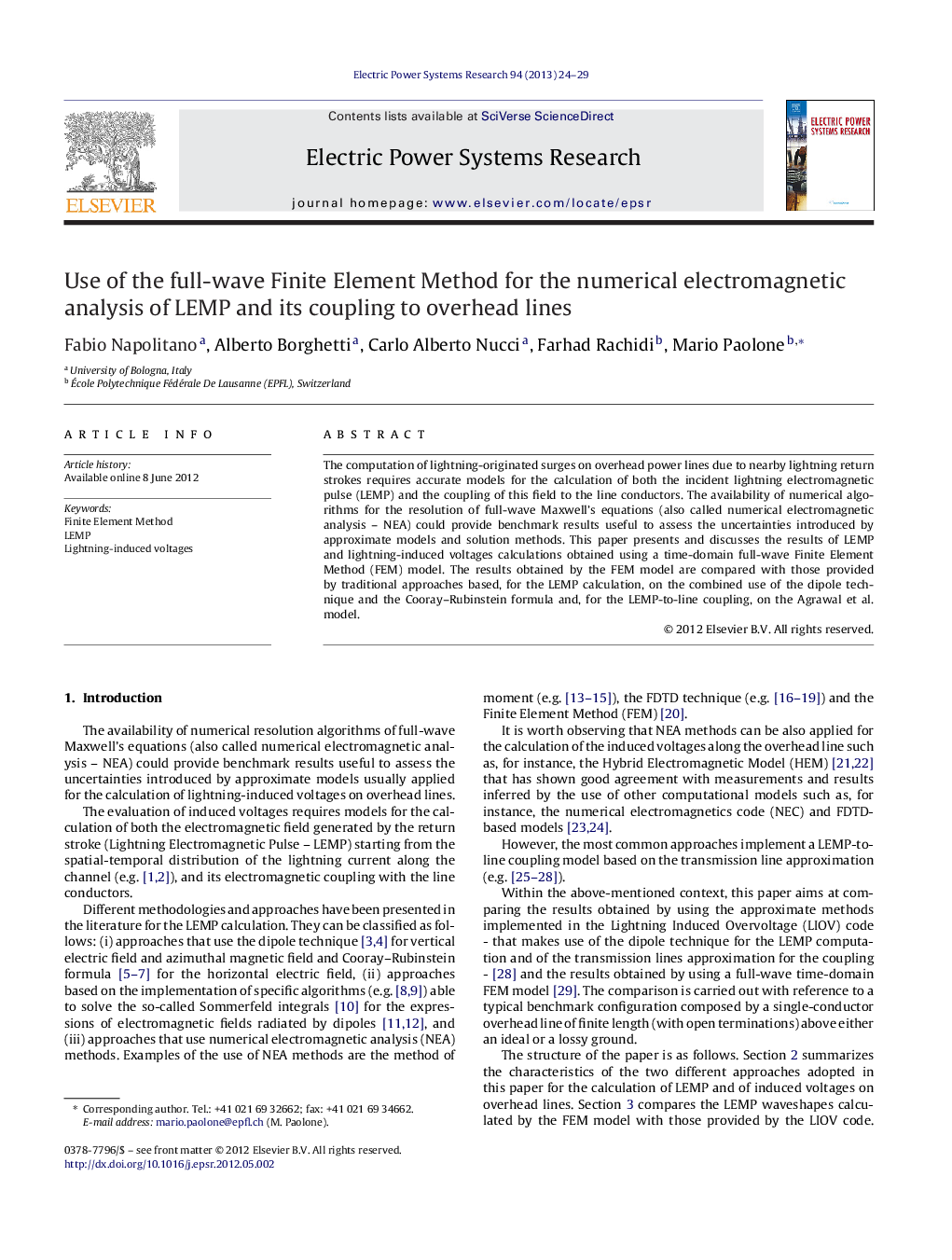| Article ID | Journal | Published Year | Pages | File Type |
|---|---|---|---|---|
| 705403 | Electric Power Systems Research | 2013 | 6 Pages |
The computation of lightning-originated surges on overhead power lines due to nearby lightning return strokes requires accurate models for the calculation of both the incident lightning electromagnetic pulse (LEMP) and the coupling of this field to the line conductors. The availability of numerical algorithms for the resolution of full-wave Maxwell's equations (also called numerical electromagnetic analysis – NEA) could provide benchmark results useful to assess the uncertainties introduced by approximate models and solution methods. This paper presents and discusses the results of LEMP and lightning-induced voltages calculations obtained using a time-domain full-wave Finite Element Method (FEM) model. The results obtained by the FEM model are compared with those provided by traditional approaches based, for the LEMP calculation, on the combined use of the dipole technique and the Cooray–Rubinstein formula and, for the LEMP-to-line coupling, on the Agrawal et al. model.
► Computation of LEMP and lightning-induced voltages using a time-domain full-wave Finite Element Method (FEM) model. ► Validation of the FEM model for the LEMP calculation by comparison with analytical results. ► Lossy ground case: discussion of LEMP waveforms differences computed by the FEM model and the Cooray–Rubinstein approach. ► Comparison of induced voltages calculated with the FEM model and by the Agrawal et al. one.
